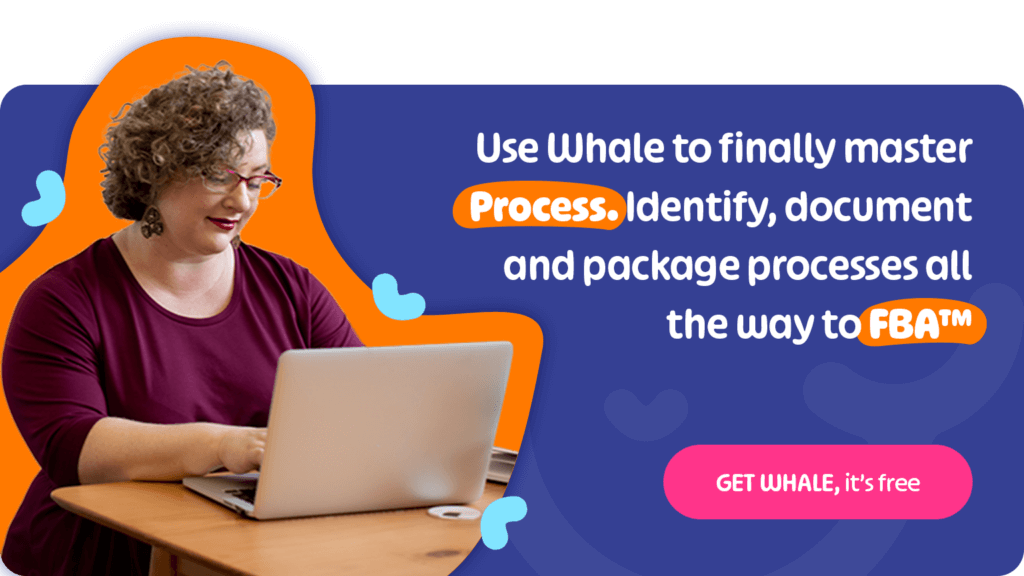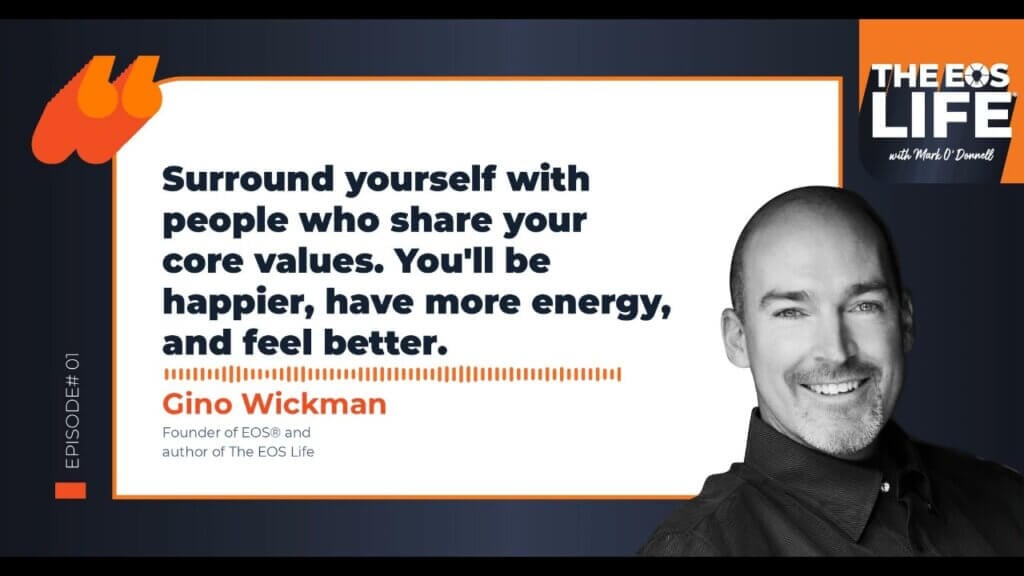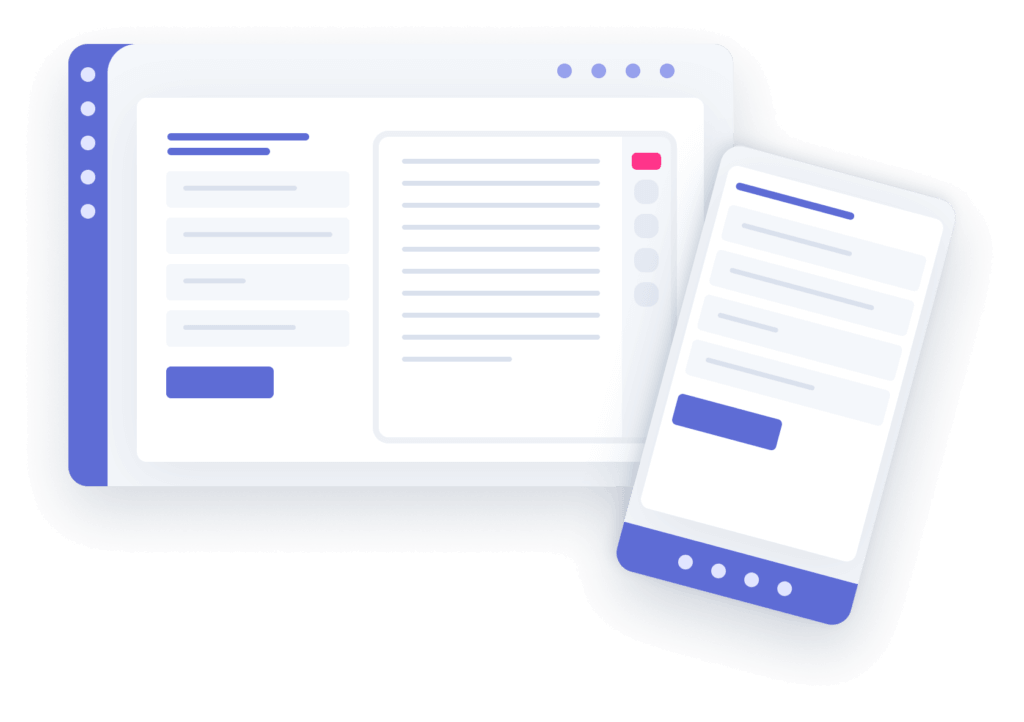If you’ve been pondering questions like, ‘What is the People Analyzer™?’, ‘How do I use the EOS® People Analyzer?’ and ‘Where does the People Analyzer fit into my business?’, you’re in the right place.
I got 99 problems, and…my people are 98 of them.
Unfortunately, this is the theme song to many a company’s story.
Hiring, retaining, promoting, and terminating employees is one of the most complex parts of growing a business. And for EOS Worldwide founder Gino Wickman, it’s also one of the most essential business areas to master.
This is exactly why he placed people at the heart of his Entrepreneurial Operating System® — a set of tools and concepts to help savvy entrepreneurs elevate their businesses.
And to really get to grips with the People Component™, he introduced a vital element of the EOS Toolbox™: The People Analyzer.
So if you’ve been pondering questions like, ‘What is the People Analyzer?‘, ‘How do I use the EOS People Analyzer?‘ and ‘Where does the People Analyzer fit into my business?‘, you’re in the right place.
Here's what we'll cover:
- The People Component: a speedy intro
- The People Analyzer — everything you need to know
- Handling the People Analyzer’s outcomes
What is the People Component in EOS?
EOS revolves around the Six Key Components™: Vision, People, Data, Issues, Process, and Traction.
The People Component helps you identify, hire, and retain team members who get your culture, and fill the seats you need to achieve your vision.
Ensuring you have the right people in the right seats (RPRS) is a game changer in any business and can mean the difference between success and failure.
"You will never have enough time unless you have the right people in the rights seats. You will never have the right people in the right seats unless you have the right structure." (EOS)
Tools in the people component include;
- The People Analyzer
- The Accountability Chart
Today we’re focusing on the People Analyzer as part of the people component as a way to get the right people in the right seats.
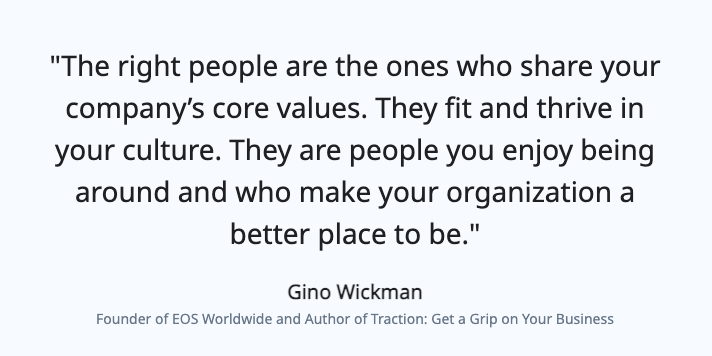
The EOS® People Analyzer: why, what and how 🤔
Evaluating people can be subjective without the right tool. And that can lead to problems.
The People Analyzer, helps you clearly identify if someone fits in your culture and is filling the right seat.
What is the EOS® People Analyzer?
The EOS® People Analyzer is a way to evaluate that you have the right person in the right seat.
The tool which helps companies running on EOS® focuses on two elements;
- Core Value alignment I.e. Does the person in that seat embody your Core Values?
- GWC™ I.e. Do they get it? Do they want it? And do they have the capacity to do it?
How does the EOS® People Analyzer work? The 3 Steps
You’ll usually have between 3-5 Core Values as a company. And if a current or prospective employee doesn’t embody those values, chances are you’re not a match made in heaven.
The People Analyzer is a way of testing that.
For everyone from potential recruits, to future promotees, to those who just aren’t fulfilling their seat responsibilities.
How does it look in practice? A little like this.
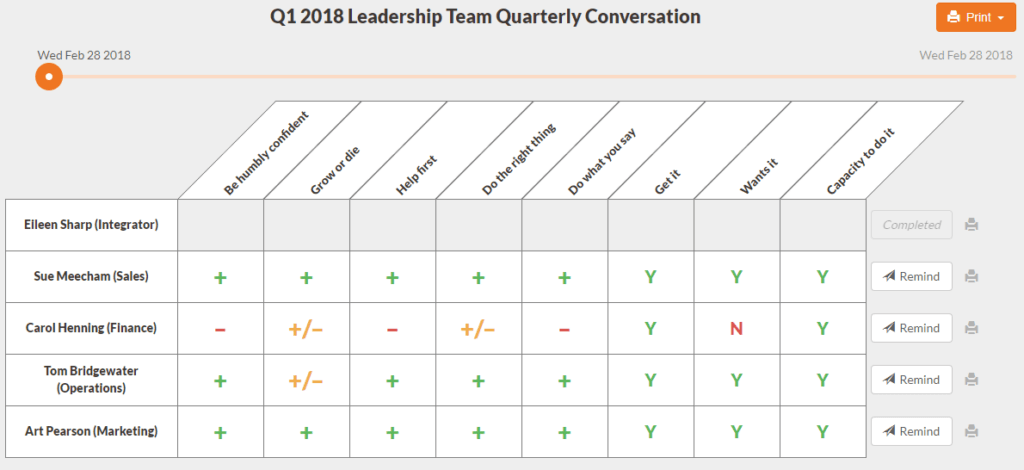
1. Start with the Core Values
Take just one Core Value as outlined in the Vision Traction Organizer. E.g., commitment to a great customer experience.
Then ask ~3 questions to assess the team member’s commitment to that value. E.g ‘what are some of the ways you solved customer problems in the past?’
FINALLY Score each answer with a:
- ‘+’ if they match up
- ‘+/-’ if they’re nearly there
- ‘–’ if that core value doesn’t align with them.
e.g. ‘helping customers’ would receive a ‘+’
And simply repeat for each value and each question you have.
2. Then move onto the GWC (Get-it Want-it and have capacity) component
Refer to your Accountability Chart™ so you understand what the company needs from the seat and what the seat responsibilities are.
Then consider the team member in question and ask;
- ‘Do they get it?’
E.g., Are they made for the seat? Do they have a natural kinship to it? Understand it on every level? Is it who they are? Were they born to do it?
- ‘Do they want it?’
E.g. Are they excited about it? Passionate? Does it make them want to come into the office every day? Is it what they get out of bed for?
- ‘Do they have the capacity for it?’
E.g., Do they have the mental, physical, and emotional capacity for the seat? Do they have the time capacity? Do they have the knowledge or skills? Or do they need training, mentorship, and investment?
3. Finally, do the math
Set a bar for the number of ‘+’, ‘+/-’ and ‘-’ answers our employee or candidate needs in order to secure the seat. E.g. 18 questions — a candidate must have 10 ‘+’ with 3 ‘+/-’ or higher.
Add up how many of each the employee or candidate has and you’ll clearly be able to see if they’re the right person for the job.
Note: As a rule, you should aim for more ‘+’ than ‘+/-’ or ‘-’.
Et voilà! Those are the steps people scoring success.
Why is the EOS® People Analyzer so popular?
Over 110K companies are already using EOS tools. And the People Analyzer is a fan favorite among them.
The reasons behind that? Well, there’s a few:
- Simplicity: Making people decisions is tough, especially figuring out the fit. The People Analyzer boils it down into a simple 10 step process that works every time.
- Speed: You can spend hours humming and hawing over a people decision. And those hours are costly to the business. Basing decisions on straightforward yes/no answers and a total calculation saves you a ton of time.
- Standardized: Recruitment and promotion processes in particular can be subjective. The People Analyzer standardizes and streamlines the process to make it fair for all.
- Synchronicity: Skill sets are simple to judge. But testing for that fit, feel or connection can be a minefield. Asking Core Values questions with a yes/maybe/no scoring system makes finding that synchronicity a breeze.
- Sophistication: Hands up if you’ve been through a terrible recruitment, promo or review process. Usually, there’s a broken process to blame. Enter the People Analyzer: fixing and elevating people processes across the board.
FAQs about the EOS® People Analyzer
What are EOS Core Values?
Core values are a set of timeless, guiding principles that direct behavior and define your culture.
They form part of the 8 questions in the Vision Component of EOS.
They;
- Help recruit the right people into the organization.
- Guide decision-making in the business.
- Help guide the right actions.
- Increase the chances of getting your start-up aquired.
- Create a competitive advantage.
When do you use the People Analyzer?
The People Analyzer helps with strategic hiring decisions and also slots right into your day-to-day management processes.
That means you can use the People Analyzer when you’re:
- Hiring – When you’re interviewing for a new seat, transfer or promotion, get the People Analyzer out and do the math.
- Promoting – Someone may be work well in one area but not in another. The People analyzer will help you make decisions regarding promotion easier.
- Transferring
- Reviewing – When you sit down to have your Quarterly Conversation™ with each direct report, check if your employee is still aligned with the company and the seat.
- Terminating – The toughest task:
When you get that nagging feeling that someone is in the wrong seat (heck, even the wrong company entirely
) go back to the People Analyzer and really asses them. Then make the tough choices based on logic, not emotion.
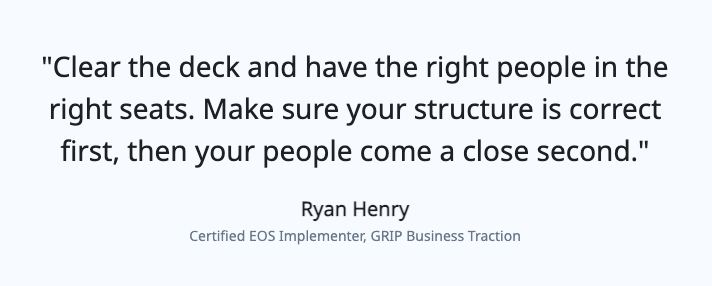
Is it just leadership who can use the People Analyzer?
Definitely not! The People Analyzer can be used at all levels of your business.
In fact, it totally should be. And not just by managers.
The People Analyzer can be a great tool for self-reflection. If you’ve taken the time to effectively manage your processes, documenting and making them accessible, your employees should be able to assess for themselves if they’re the right person for the seat they’re in.
Create a process that reviews the People Analyzer regularly. Don’t forget, people change. And what’s needed from the seat can too.
Where in the business is the People Analyzer tool used?
The beauty of the People Analyzer is that it can be used at every seat level.
Whether you’re interviewing new Directors or interns, their commitment to your core values and their ability to GWC the role is just as important. And the People Analyzer works just as effectively.
Don’t jazz it up or dumb it down — once you have your questions in place, stick to them and roll the process out company-wide.
What are some common challenges in implementing the EOS People Analyzer?
There are a few challenges that can arise with implementing the People Analyzer.
These include;
- It simply doesn’t happen – Unless the People Analyser is part of the business process, it’s not going to happen. Remember to create a process relating to the People Analyzer.
- Taking action post the analysis – It can be difficult to have to move someone who’s in the wrong seat or even have to let them go. Remember to keep your core values top of mind and discuss issues when they first arise. This will help prevent situations get out of hand. Otherwise, you may need to you’ll need to schedule one-on-one time with anyone not peforming and give them a chance to realign the company’s vision.
What actions should you take based on the People Analyzer's results?
It may be that all your employees and prospective recruits are the perfect fit for your company. But, let’s face it — that’s highly unlikely.
In scaling your business, you’re bound to cross paths with:
- External applicants whose skill sets don’t align with the seat.
- Internal applicants who aren’t quite ready to make the leap.
- Existing employees who just don’t mesh with the Core Values.
And there are no two-ways about it, making these changes is hard.
Whether it’s postponing promos, terminating contracts, or rejecting applications, saying no to people gets awkward.
But that’s the whole reason the People Analyzer exists: to facilitate having that conversation in the most evidence-driven, productive, and aligned way possible.
Because chances are, once you explain the disconnect the People Analyzer has raised, they’ll begin to see it too.
And as long as you manage the process well by:
- Having these conversations well in advance of taking any action
- Looking inwards first to check that you, the company, or your values aren’t at fault
- Assessing whether steps can be taken to align them with the seat they want
…you can commit to your course of action knowing it’s the right thing to do.
Bottom line? Core Values + People Analyzer = Right People 🤝🏿
The People Analyzer is about getting the right people in the right seats.
But it’s also about making that task way less painful than it usually is. No sleepless nights. No constant back and forth. No waiting around to summon up the courage to make your move.
When you bring it back to the basics, as the People Analyzer does, the question ‘Is this person really right for this seat?’ is pretty simple.
So create your People Analyzer process today and leave those people problems in the past. You got this!
Is it easy to document, share and scale your People Analyzer process across your business? Are you looking to scale?
Try Whale for Free!
Get documenting & training NOW
What is your greatest challenge?
SOP & Process Documentation
Use Whale to create SOP & Process Documentation and centralize everything in an easily accessible single source of truth.
Employee Onboarding & Training
Whale is the fastest way to get your team aligned. Discover how Whale boosts team performance and ensures new hires excel from the get-go.
Companies on EOS ®
Whale is the all-in-one system for teams running on EOS® to help document your processes, train your teams, and build a foundation for growth.






